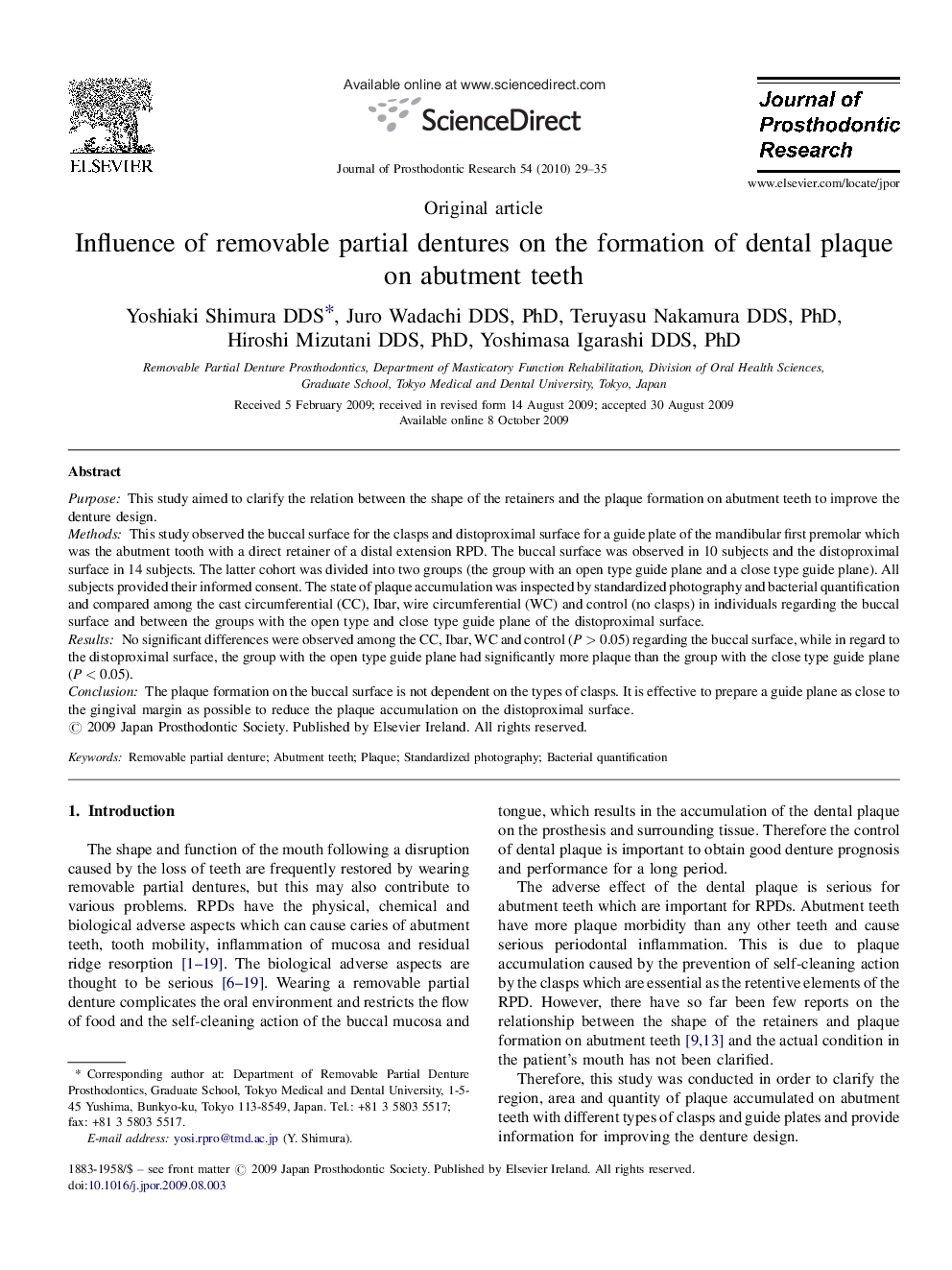| Article ID | Journal | Published Year | Pages | File Type |
|---|---|---|---|---|
| 3160714 | Journal of Prosthodontic Research | 2010 | 7 Pages |
PurposeThis study aimed to clarify the relation between the shape of the retainers and the plaque formation on abutment teeth to improve the denture design.MethodsThis study observed the buccal surface for the clasps and distoproximal surface for a guide plate of the mandibular first premolar which was the abutment tooth with a direct retainer of a distal extension RPD. The buccal surface was observed in 10 subjects and the distoproximal surface in 14 subjects. The latter cohort was divided into two groups (the group with an open type guide plane and a close type guide plane). All subjects provided their informed consent. The state of plaque accumulation was inspected by standardized photography and bacterial quantification and compared among the cast circumferential (CC), Ibar, wire circumferential (WC) and control (no clasps) in individuals regarding the buccal surface and between the groups with the open type and close type guide plane of the distoproximal surface.ResultsNo significant differences were observed among the CC, Ibar, WC and control (P > 0.05) regarding the buccal surface, while in regard to the distoproximal surface, the group with the open type guide plane had significantly more plaque than the group with the close type guide plane (P < 0.05).ConclusionThe plaque formation on the buccal surface is not dependent on the types of clasps. It is effective to prepare a guide plane as close to the gingival margin as possible to reduce the plaque accumulation on the distoproximal surface.
